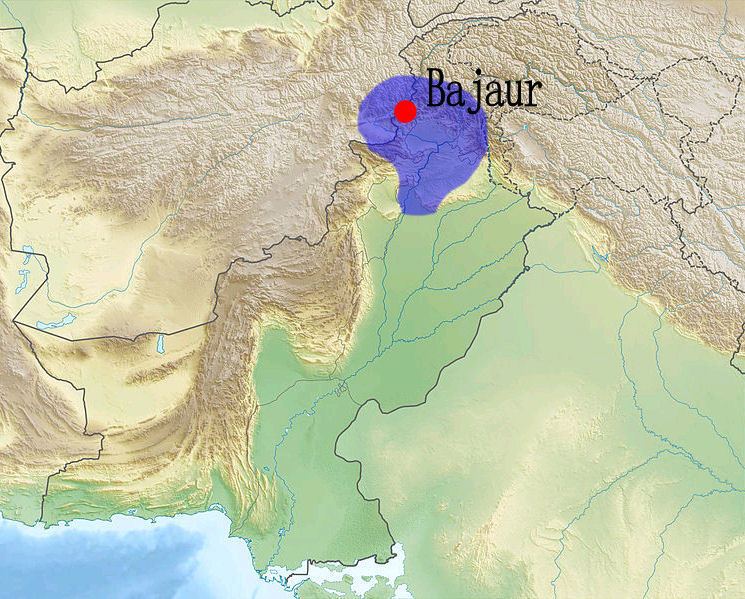Capital Bajaur Government Monarchy Established 15 BCE | Religion Buddhism Historical era Antiquity | |
 | ||
Languages Scythian language
Prakrit (Kharoshthi script)
Greek (coinage) | ||
The Apracharajas (also known as Apracarajas, Apraca, Avacas) were an Indo-Scythian dynasty ruling dynasty of Western Pakistan. The Apracharaja capital, known as Apracapura (also Avacapura), was located in the Bajaur district of the Khyber-Pakhtunkhwa, Pakistan. Apraca rule of Bajaur existed from the 1st century BCE to the 1st century CE. Its rulers formed the dynasty which is referred to as the Apracharajas.
Contents
Origins
Before the arrival of the Indo-Greeks and the Indo-Scythians, Apracan territory was the stronghold of the warlike Aspasioi tribe of Arrian, recorded in Vedic Sanskrit texts as Ashvakas. The Apracas are known in history for having offered a stubborn resistance to the Macedonian invader, Alexander the Great in 326 BCE.
The Indo-Scythians of the Apracharajas dynasty were successors of the Indo-Scythian king Azes. It seems that they established their dynasty from around 12 BCE. Their territory seems to have centered in Bajaur and extended to Swat, Gandhāra, Taxila, and parts of eastern Afghanistan.
Buddhism
The Apracharajas embraced Buddhism: they are known for their numerous Buddhist dedications on reliquaries. On their coins Hellenic designs, derived from the coinage of the Indo-Greeks, continued to appear alongside Buddhist ones.
Numerous Buddhist dedications were made by the rulers of the Apracas:
"Members of the Apraca family in the northwestern borderlands of Pakistan and Afghanistan made numerous Buddhist donations recorded in Kharosṭḥī inscriptions dated in the era of Azes. Although most of these inscriptions lack specific provenance, the domain of the Aparacas was probably centered in Bajaur and extended to Swat, Gandhāra, Taxila, and parts of eastern Afghanistan in the last half of the first century BCE and the early decades of the first century CE. Since the discovery of an inscribed reliquary casket from Shinkot in Bajaur donated by the Apraca king Vijayamitra (who evidently founded the dynasty), other inscriptions record donations of relics by at least four generations of kings, queens, and court officials. Apraca kings known from Kharosṭḥī inscriptions, coins, and seals included Indravasu, Visṇuvarman (perhaps identical to Viśpavarman), and Indravarman, but the dynastic genealogy remains uncertain."
A recently discovered inscription in Kharoshthi on a Buddhist reliquary, the Bajaur reliquary inscription, gives a relationship between several eras of the period and mentions several Apraca rulers:
"In the twenty-seventh year in the reign of Lord Viyeemitro, the King of the Apraca; in the seventy-third year which is called the era of Azo, in the two hundred and first - 201 - year of the Yonas (Greeks), on the eighth day of the month of Sravana; on this day was established [this] stupa by Rukhana, the wife of the King of Apraca, [and] by Viyeemitro, the king of Apraca, [and] by Iṃdravarmo (Iṃdravaso), the commander (stratega), [together] with their wives and sons."
This inscription would date to c. 15 CE, according to the new dating for the Azes era which places its inception c. 47 BCE. The rulers seem to have been related to Kharaostes.
Dr. Prashant Srivastava, an Indian professor from the University of Lucknow, has in a research monograph highlighted the significant role played by the Apraca Dynasty rulers, and has connected the Apraca kings of Pakistan to the Ashvaka clan of Vedic literature.
The Apraca kings are also mentioned in the Bajaur casket.
